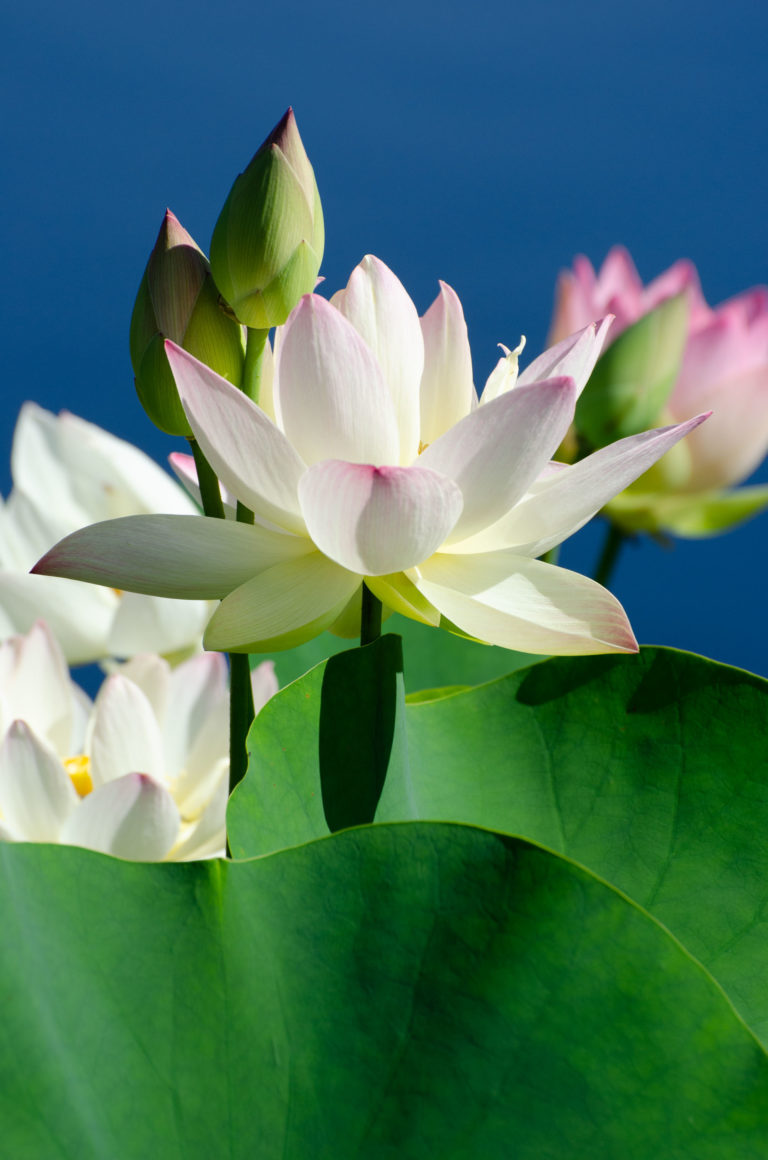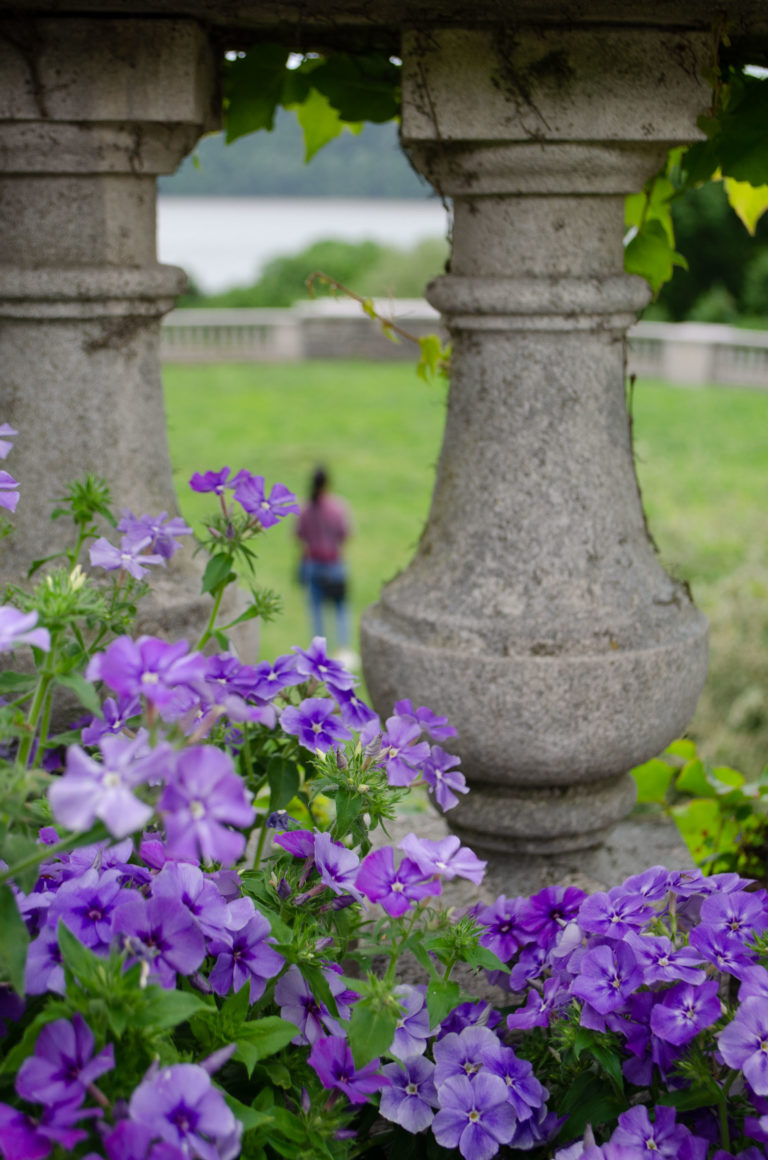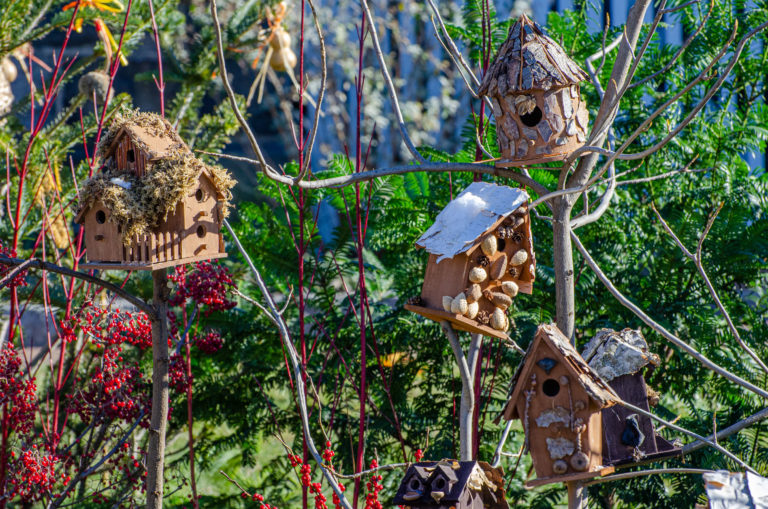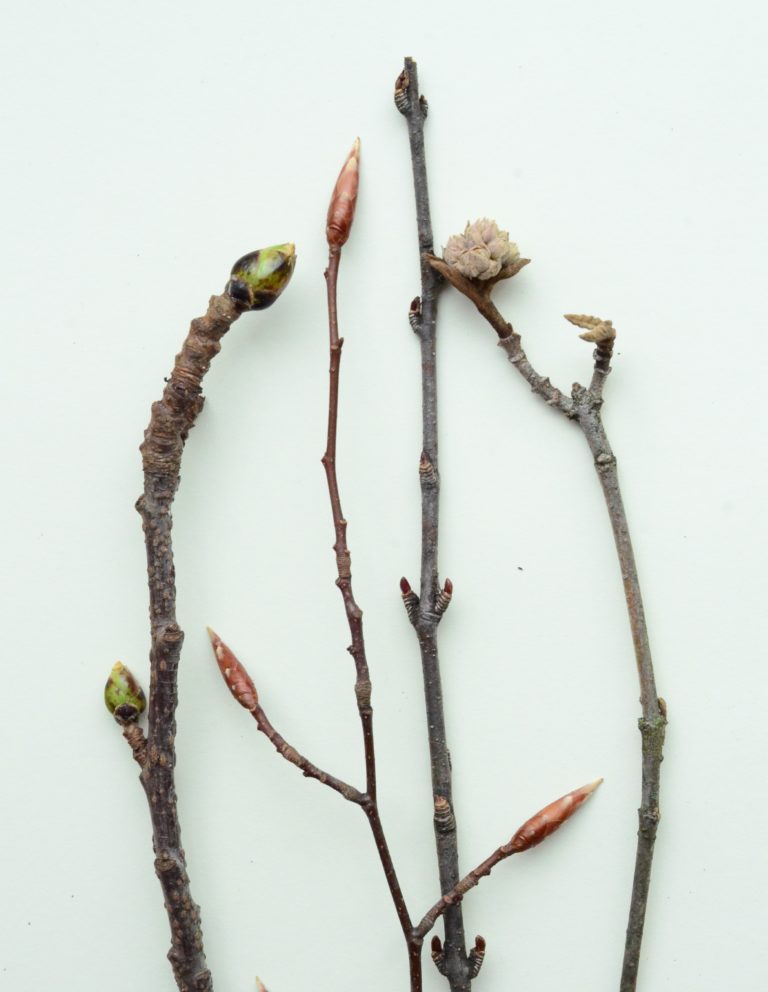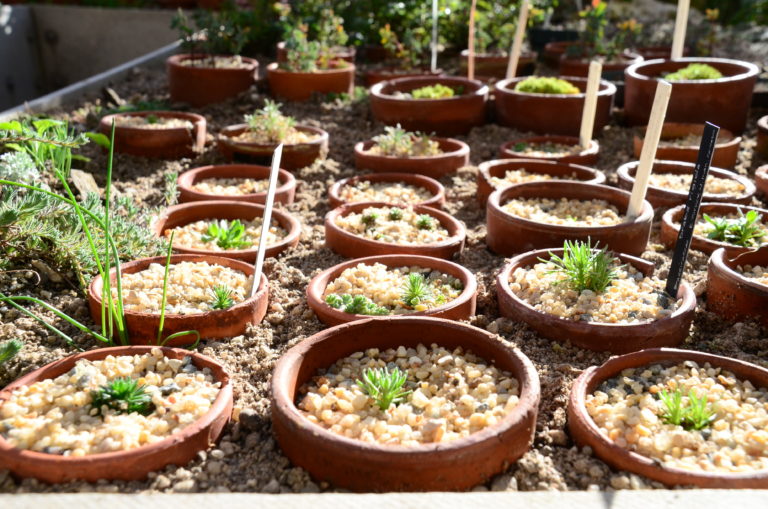
A Part of the Aesthetic: The Alpine House Nursery
January 25, 2023In a garden, a nursery is simply an area used to produce and grow plants for a separate destination. At Wave Hill, there are a few types of nurseries tucked into the landscape; one of them is inside the T. H. Everett Alpine House.
Alpine House Gardener Sandra Schaller is a self-proclaimed “plant-making machine”. In a recent conversation, we both learned just how many plants in the Alpine House fell within the definition of nursery.
Typically, nurseries are utilitarian. Plants are in the ground or above it in plastic pots and are arranged in straight rows and lanes. But what happens when a nursery is part of a garden and on display to the public? When done well, the public shouldn’t be able to distinguish display from working aspects (the nursery) of the collection—and this fine balance is at play in the Alpine House.
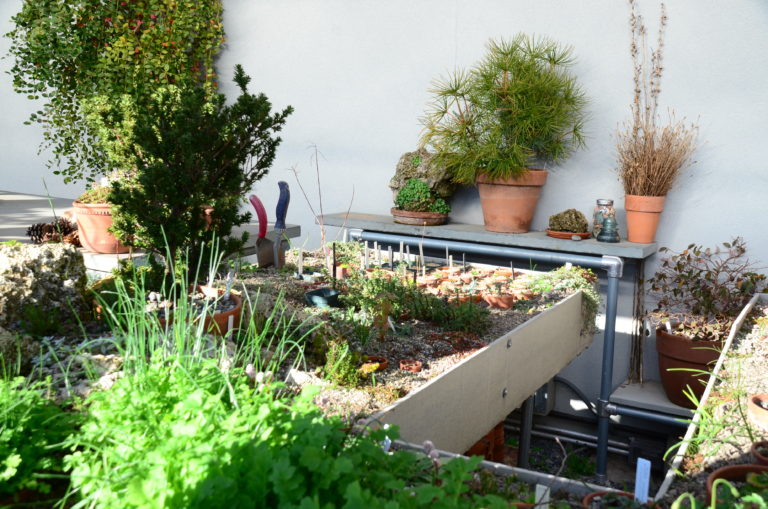
Many alpine plants are rare in cultivation, making them difficult to acquire. So, to create an attractive collection, Wave Hill starts many from seed. These seeds are started like any typical plants—following the species-specific directions. These can include cold stratification or germinating on a heat mat to meet the seed’s temperature requirements. Something that Schaller and many other Wave Hill Gardeners prefer is germinating seeds in a container. After the first set of true leaves appears, these small plants are pricked out and repotted into two-inch terra cotta long toms. “Long toms” are a type of pot that is tall, with space for a deep taproot, a trait of many alpine and rock garden plants.
Schaller elaborates on the tedious care required to grow alpines from seed: “Plants stay in these long toms until roots show on the bottom. This signals that it is time to bring them up in size. If you don’t, it can actually stunt their growth. So you have to bring them up incrementally.” Some plants move right up in size and are blooming by the spring. Some species, like drabas, will stay small for two to three years before flowering. At the Alpine House, find many of the seed-started plants at the back of the sand bench alongside Schaller’s work bench (pictured above).
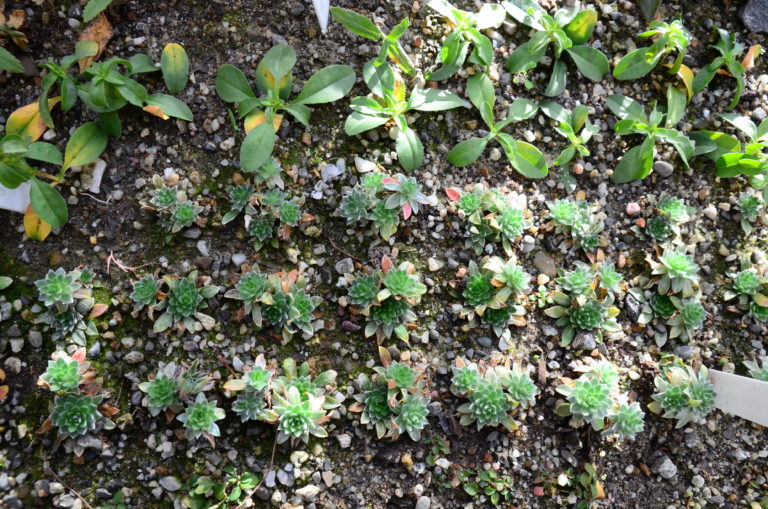
The sand benches in the Alpine House are composed of different-sized particles of sand. The purpose of the sand-filled benches is to moderate temperature and moisture content in the pots, which are sunk into the sand. All the containers in the bench must be terra cotta, a porous material that allows the exchange of moisture. Typically, the sand in the tables is watered, but not the plants themselves—this prevents rot. Schaller will “sometimes water just the edge of the pot to keep the terra cotta (and its substrate) moist.” Since the sand is moist, it makes a great rooting medium and Schaller will poke vegetative cuttings directly into the sand.
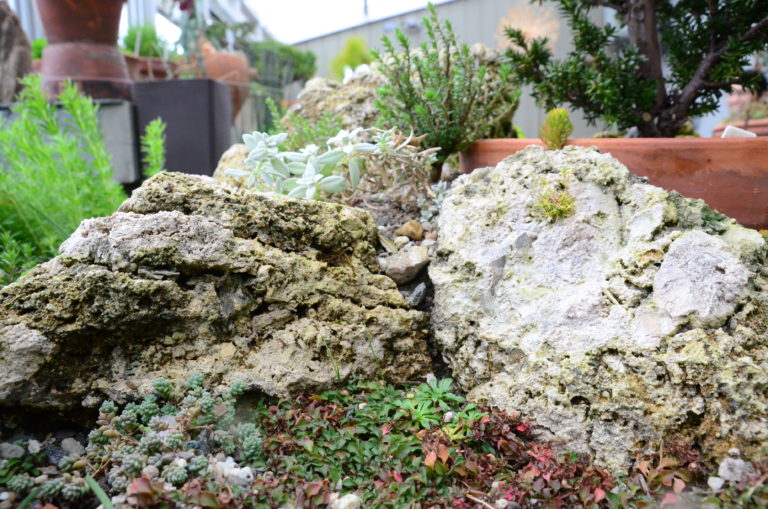
Seed-started plants make up part of the Alpine House nursery. The other half are plants that started as vegetative cuttings. Cuttings of tender growth like plant leaves and branch tips will root under favorable conditions such as the moist sandy substrate found in the benches. These cuttings are tucked into the benches everywhere—from straight rows to miniature landscapes. Referring to one mountainous landscape of tufa rocks, Schaller explains that it was “started pragmatically because it is close to the workbench. They [tufa rocks] have little pockets and are craggy, more so than other rocks, so it lends itself to the aesthetics of the landscape.” She will take vegetative cuttings that were pruned off and stick them into the rock pockets or at the base, creating a reproduction of a high-elevation mountain.
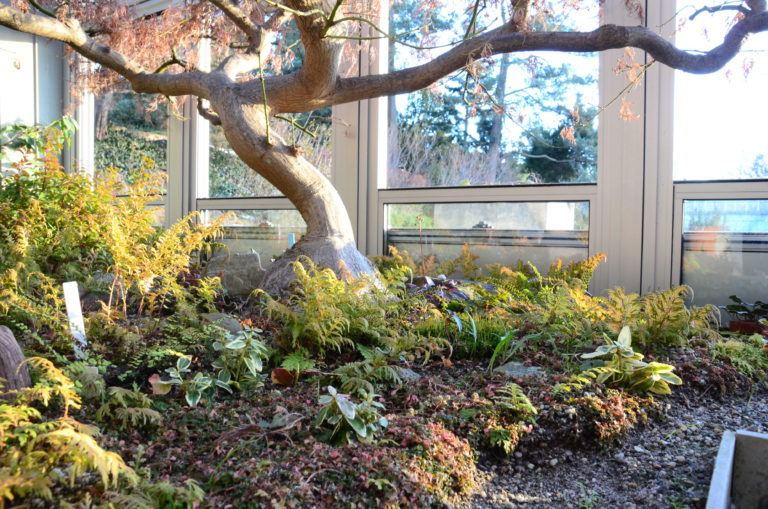
On the eastern end of the Alpine House is a Japanese maple, its limbs stretched out above a miniature forest landscape inspired by the plants growing around Schaller’s home. This landscape showcases vegetative cuttings mingling with a carpet of native plants. Schaller explains the nursery aspect of this display: “I know some plants tend to do better with companions. I thought that if those [species, which are planted directly into the sand] don’t work out, these [in the landscape] might.” The varying textures of the plant palette showcase the diversity of plants under Schaller’s care.
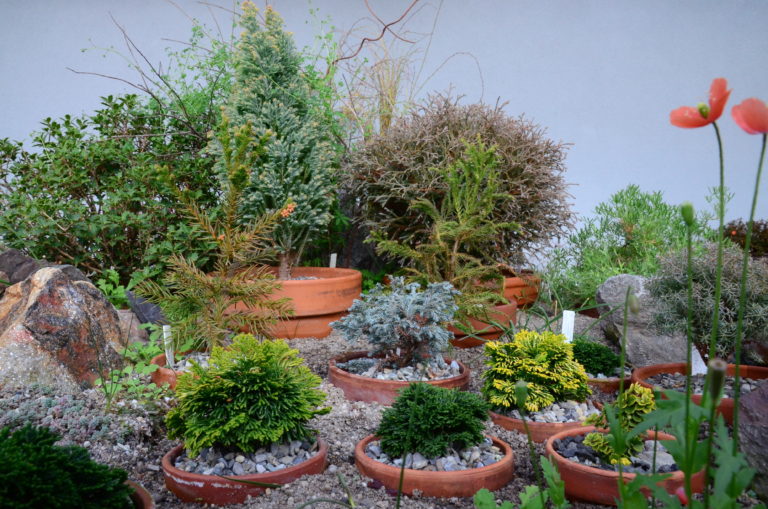
Eventually, plants must graduate from the nursery. There are two groups of plants in the Alpine House nursery: tender and hardy. Those that are tender will remain in the Alpine House collection receiving protection from the outdoor elements, Schaller describes this collection as “slow growing, tiny, diminutive, tender.” Those that are hardy will go to the Wild Garden or into alpine troughs on the terrace outside of the Alpine House. The plant dynamic in the troughs is described by Schaller as “cute compact, a little bit bigger, but things can be the same size as the Alpine House.” Right now, a mix of conifers are arranged in the center of the Alpine House, they will get moved out into the troughs and Wild Garden this year.
There is a lot of work happening in the Alpine House and elsewhere behind the scenes as seed starting season is well underway. Stop by the Alpine House to take a peek at what is happening—early spring welcomes many colorful and large flowers. Join Gardener Sandra Schaller and Artist Rebecca Allan for an intimate tour and talk focusing on the workspace in the Alpine House and Allan’s exhibition Cultivating Eden, on display in Wave Hill House. Follow the link to learn more about Allan’s work and to register for these upcoming programs
Jess Brey,
Ruth Rea Howell Senior Horticultural Interpreter
